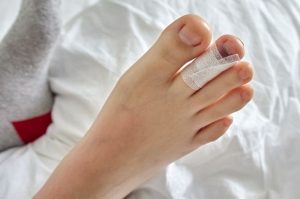Stroke is a disease that must be a concern so that it can be prevented because it has a very large impact on life. Following a stroke, people may lose their ability to communicate normally and have difficulty swallowing foods and drinks. Speech and swallowing therapy are common methods used to treat these impacts of stroke.
Tips for Getting Back to Health after a Stroke
The impact of stroke on each individual is different. The influencing factors include the severity of the stroke and the timing of treatment. The sooner the patient is treated after a stroke, the better their chances of recovery. Therefore, the stroke recovery program for each patient is different. Here are some general tips for getting back to health after a stroke:
- Have a healthy diet with balanced nutrition
- Get physical and mental support from family and loved ones
- Abandon an unhealthy lifestyle that previously contributed to the stroke attacks, for example smoking, frequent staying up late, or drinking alcohol
- Exercise according to the recommendations of the doctor
- Take medications according to the doctor’s prescription
- Undergo therapy programs, including speech and swallowing therapy
What is the Golden Period in Stroke Patients
In the management of stroke, there is a golden period that is very vital for patients. The golden period here refers to the first hour after a person shows symptoms of stroke. Time is very precious for stroke patients. Patients must receive immediate treatment in the hospital with anticoagulant medicines to prevent brain damage in the long term and save their lives.
In a 2017 study, treatment in the golden period was found to produce good outcomes in all patients, regardless of age and comorbidities. That is why it is important for people to recognize the signs and symptoms of stroke. If you suspect that someone has a stroke, immediately call an ambulance or hospital so that they can be treated as quickly as possible by medical personnel.
Speech Therapy Activities
Strokes that result in nerve damage can make patients unable to speak as before. Speech therapy is part of a rehabilitation program to improve communication and speech skills for stroke patients. The activities carried out in this therapy include:
- Stick the tongue out and pull it back in repeatedly each in 2 seconds to train the tongue to move in a coordinated manner.
- Attach the tongue to the right side and the left side alternately. Repeat every 2 seconds on each side with an open mouth.
- Stick the tongue out, then try to reach the nose with the tongue for 2 seconds. After then try to reach for the chin for 2 seconds as well, repeat alternately.
- Make a smiley expression in front of the mirror repeatedly.
- Make lip movements as if they are about to kiss repeatedly.
- Repeat the pronunciation of pairs of vowels and consonants that are difficult to pronounce, for example “ra, re, ri, ro, ru” when a stroke makes it difficult for the patient to pronounce the letter “r”.
- Create and pronounce sentences aloud gradually.
- Guess the syllables spoken by the therapist or caregiver who helps with the therapy.
- Perform word games, for example filling in crossword puzzles or searching for missing letters in words
Swallowing Therapy Activities
Stroke can result in dysphagia, which is swallowing difficulty due to nervous disorders. So, in the rehabilitation program there is also swallowing therapy for stroke patients that involve repetitive movements. Activities in this therapy include:
- Stick out the tongue as far as possible, then put a spoon over the tongue and push it up for a few seconds, then relax.
- The tongue is in the same position as the point above, but this time the spoon is placed under the tongue. Push the tongue down for a few seconds, then glue it down.
- Shift the tip of the tongue from the position behind the front teeth to the back as far as possible on the palate.
- Lie up straight then raise your head slightly as if you are looking at your toes. Then return to a relaxed position as before.
- Move small pieces of paper by sucking and holding them using a straw.
- Perform swallowing movements by engaging all the muscles as strongly as possible.
- Take a deep breath, then hold it while performing a swallowing movement.
- Perform movements as if yawning while holding the tongue behind the mouth as far as possible.
- Make yawning motions, keep the tongue behind the mouth as far as possible.
How Long Does It Take to Recover?
The duration of speech and swallowing therapy to recover is different for each stroke patient. There is no exact standard for how long it will take to restore communication or overcome swallowing disorders. The influencing factors include the age of the patient, the severity of the stroke, the frequency of therapy, the underlying diseases, and the treatment of the diseases.
In the Regulation of the Minister of Health Number 81 of 2014 concerning Speech Therapy Service Standards, there is an explanation of therapy planning which includes long-term therapy goals and programs (indefinite, according to the disorders experienced by the patient), short-term (4-6 months), and daily (in accordance with the target in each meeting).
What If Recovery Doesn’t Live Up to Expectations?
Speech and swallowing therapy are key components of a stroke rehabilitation program. Many patients benefit from this therapy in relation to their quality of life. But there is always the possibility that this progress is not in line with expectations. In the middle of the therapy process, the patient’s condition may also regress, including getting a second stroke.
These challenges may have an impact physically, mentally, and emotionally so the therapy must be halted. The role of the family is needed as a companion to provide full support so that the patients can keep up their good spirit. Consultations with doctors and psychologists may also be necessary to ensure that the recovery program does not stop and increase the risk of complications.



